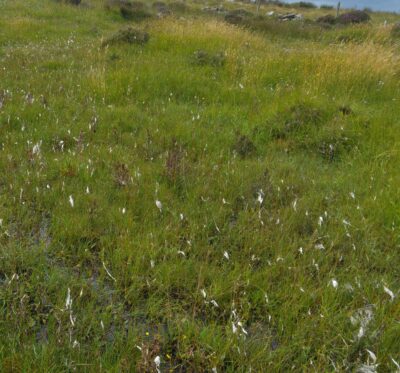Bog
Overview
Bogs develop in areas of high rainfall where peat accumulates in areas that are poorly drained. The two main types are raised bog and blanket bog. Raised bogs are accumulations of deep peat in lake basins and they are largely confined to the midlands and mid-west. Upland blanket bog occurs on flat or gently sloping ground above 150 metres and is widespread on hills and mountains in Ireland. Peat depths are usually between 50 cm and two metres but much deeper accumulations can be found in places.
Wet heath is a similar habitat but tends to occur on the lower slopes of hills and mountains that are either too dry or too steep for deep peat accumulation and typically has an average depth of 15 to 50 cm. Both of these peatland habitats occur in the Nagle’s Mountains but intact sections are now rare as most areas have been planted with non-native conifers or drained and reclaimed for agriculture.

Restoration
Bogs have been forming over thousands of years and cannot be artificially created but some bogs can be restored if drains are sealed and trees removed.
Management
Bog is best maintained by ensuring that the site is not subject to artificial drainage, over-grazing, burning or excessive tree growth.
Benefits
Bogs provide habitat for a diverse range of flora and fauna, such as Snipe, Curlew and several orchid species. In addition to their biodiversity value, bogs accumulate and store millions of tonnes of carbon and have a vital function in storing greenhouse gases that can cause climate change. They also provide a vital role in flood prevention as they store vast amounts of rainfall.
Further Information
Further information can be found on page 13 of our publication – “The BRIDE Project EIP Farm Habitat Management Guidelines” – link HERE
